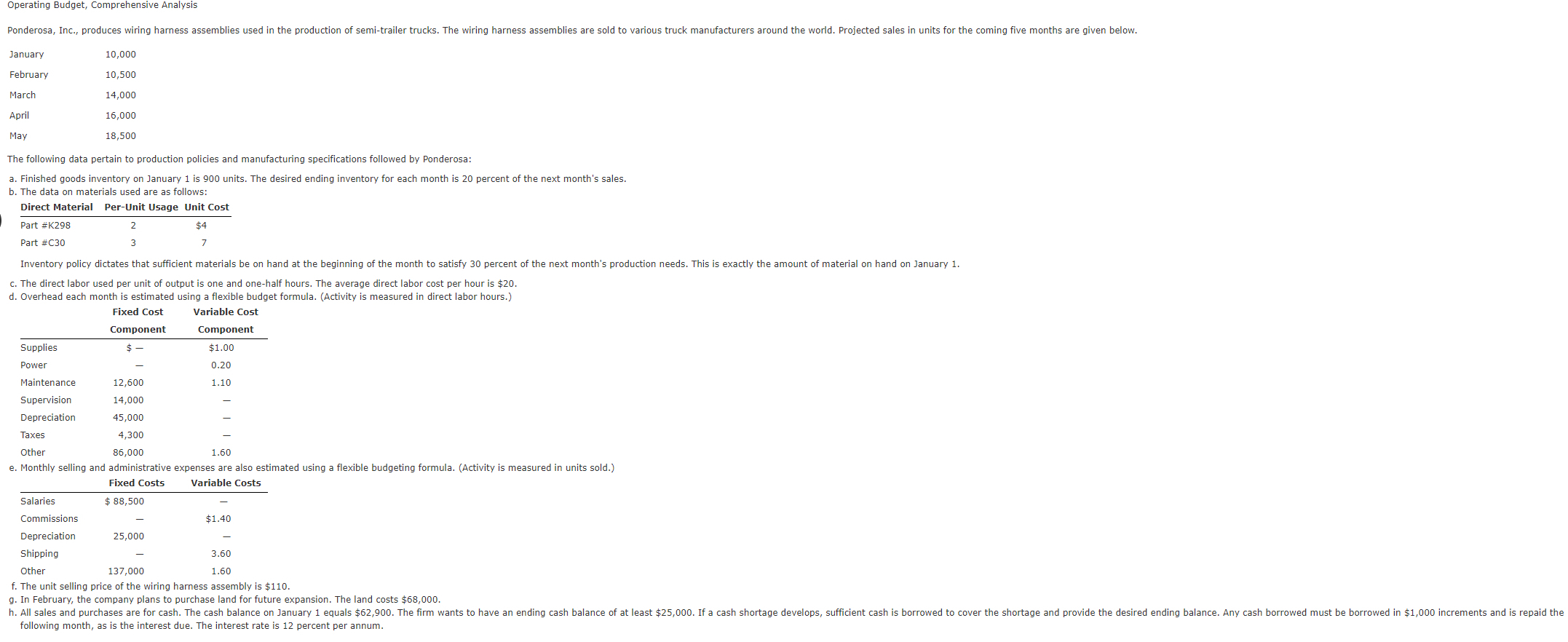Answered step by step
Verified Expert Solution
Question
1 Approved Answer
Operating Budget, Comprehensive Analysis Sales budget table [ [ , January,February,March,Total ] , [ Units ] , [ Unit selling price,,,, ] , [
Operating Budget, Comprehensive Analysis Sales budget
tableJanuary,February,March,TotalUnitsUnit selling price,,,,Sales
Production budget
tableJanuary,February,March,TotalUnit sales,,,,Desired ending inventory,,,,Total needed,,,,Less: Beginning inventory,,,,Units produced,,,,
Direct materials purchases budget
tableJanuary,February,March,TotalPart KPart CPart KPart CPart KPart CPart KPart CUnits produced,,,,,,,,Dir mat. per unit,,,,,,,,Production needs,,,,,,,,Desired EITotal needed,,,,,,,,Less: BIDir mat. to purchase,,,,,,,,Cost per unit,$$Total purchase cost,,$$ Direct labor budget. Round your answers to two decimal places, if required.
Overhead budget. Round your answers to two decimal places, if required.
Selling and administrative expense budget. Round your answers to the nearest cent, if required. Ending finished goods inventory budget. Round intermediate calculations to the nearest cent. Round your answers to the nearest cent, if required.
Cost of goods sold budgetCash budget
Enter a negative balance as a negative amount, and if an amount is zero enter
tableJanuary,February,March,TotalBeginning balance,$$$Cash receiptstableTotal cashavailable$$$Disbursements:Purchases$$$$DL payrollOverheadtableadminLandTotal disbursements,$$$$Ending balance,$$$$Financing:BorrowedrepaidInterest paid,,,,Ending cash balance,$$$$
The following data pertain to production policies and manufacturing specifications followed by Ponderosa
a Finished goods inventory on January is units. The desired ending inventory for each month is percent of the next month's sales.
b The data on materials used are as follows:
Direct Material PerUnit Usage Unit Cost
Inventory policy dictates that sufficient materials be on hand at the beginning of the month to satisfy percent of the next month's production needs. This is exactly the amount of material on hand on January
c The direct labor used per unit of output is one and onehalf hours. The average direct labor cost per hour is $
d Overhead each month is estimated using a flexible budget formula. Activity is measured in direct labor hours.
e Monthly selling and administrative expenses are also estimated using a flexible budgeting formula. Activity is measured in units sold.
f The unit selling price of the wiring harness assembly is $
g In February, the company plans to purchase land for future expansion. The land costs $
following month, as is the interest due. The interest rate is percent per annum.

Step by Step Solution
There are 3 Steps involved in it
Step: 1

Get Instant Access to Expert-Tailored Solutions
See step-by-step solutions with expert insights and AI powered tools for academic success
Step: 2

Step: 3

Ace Your Homework with AI
Get the answers you need in no time with our AI-driven, step-by-step assistance
Get Started


